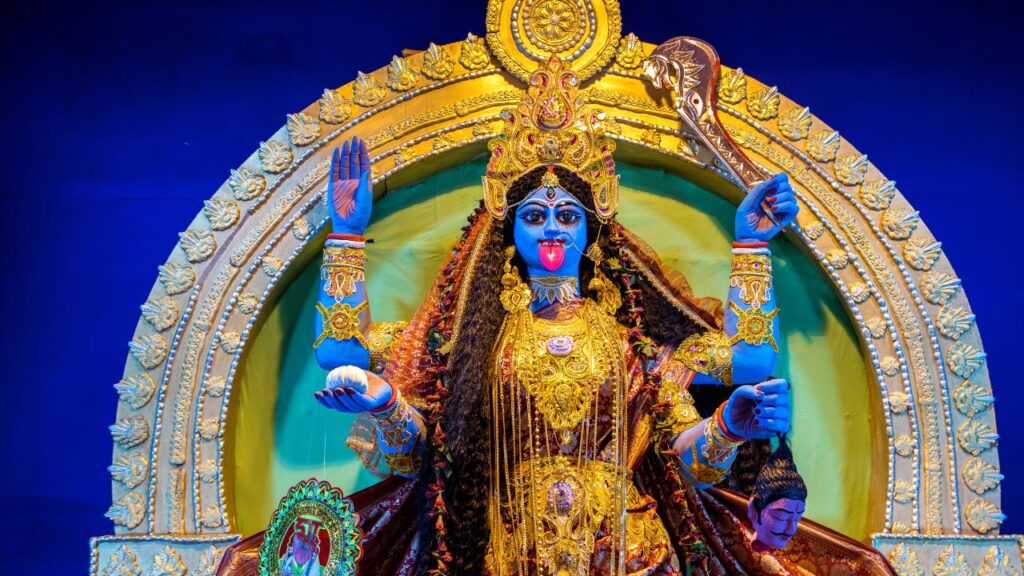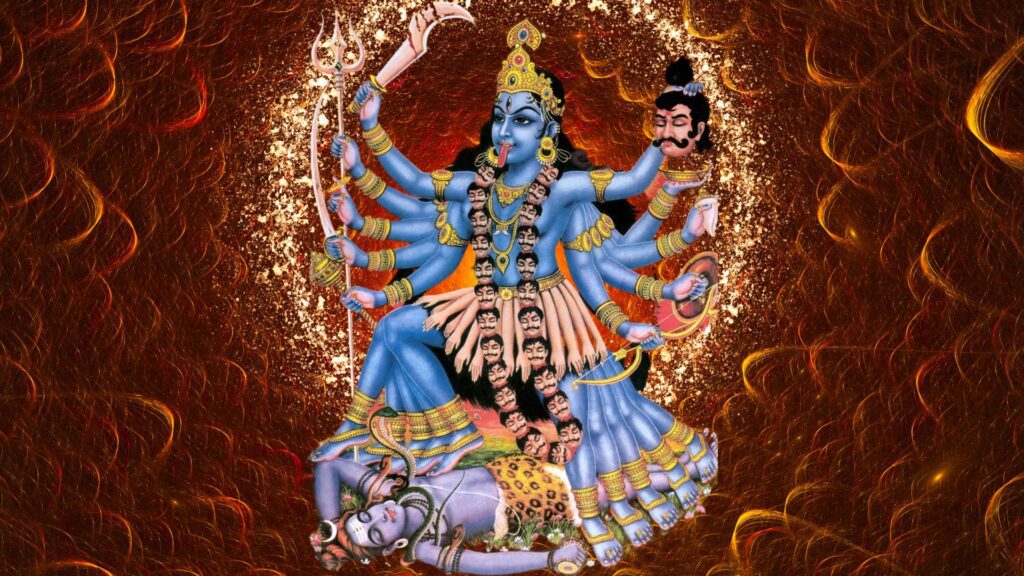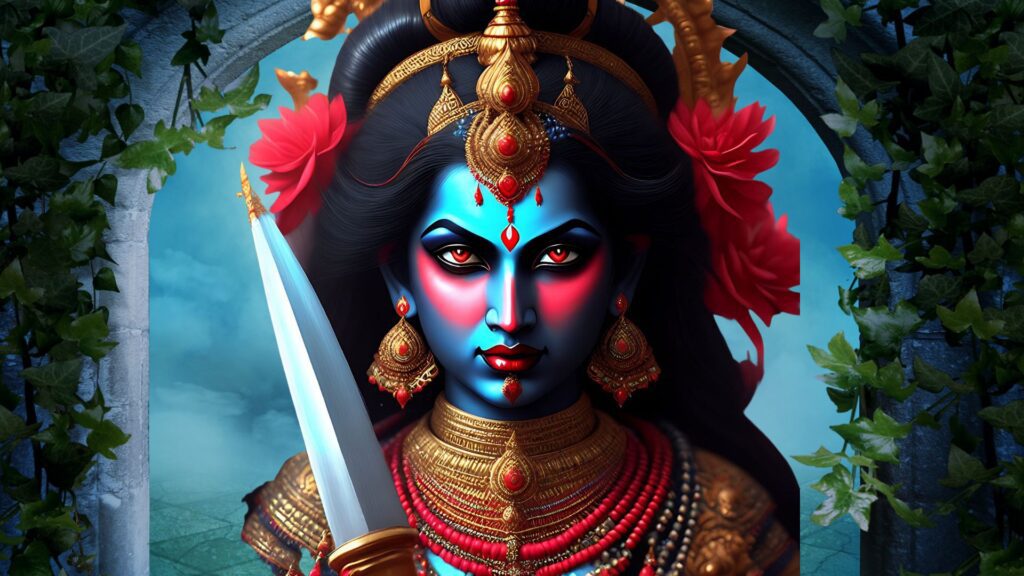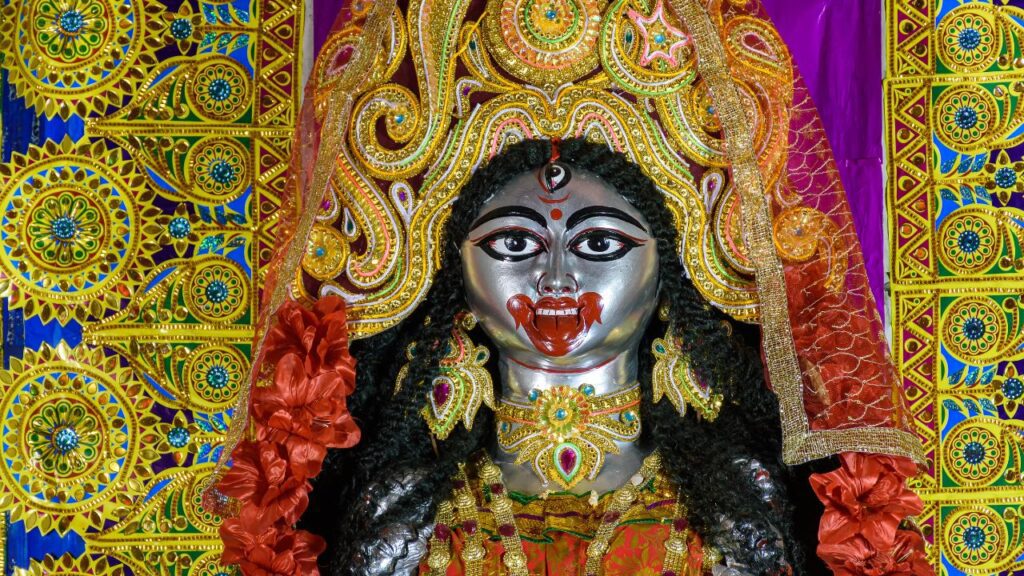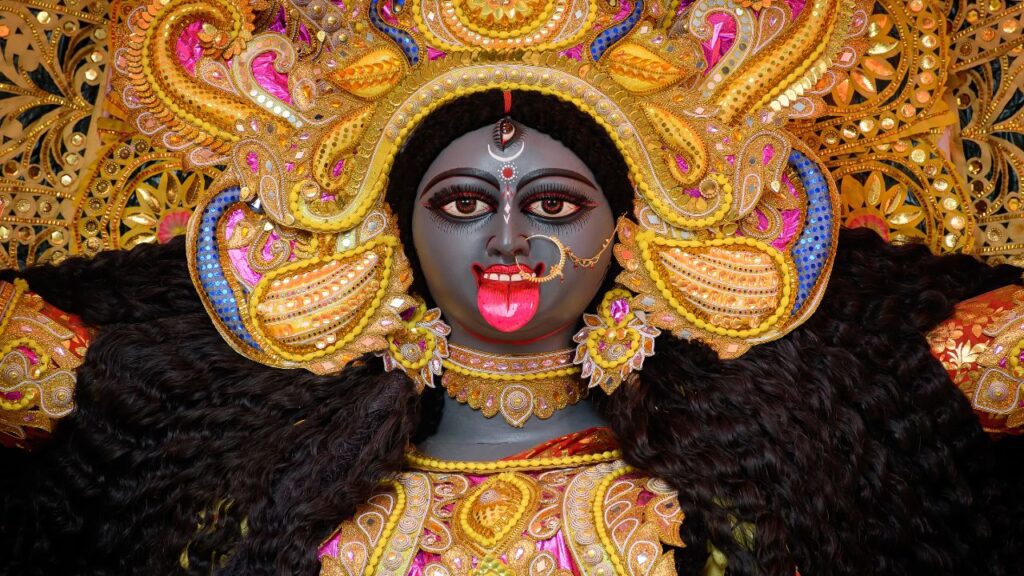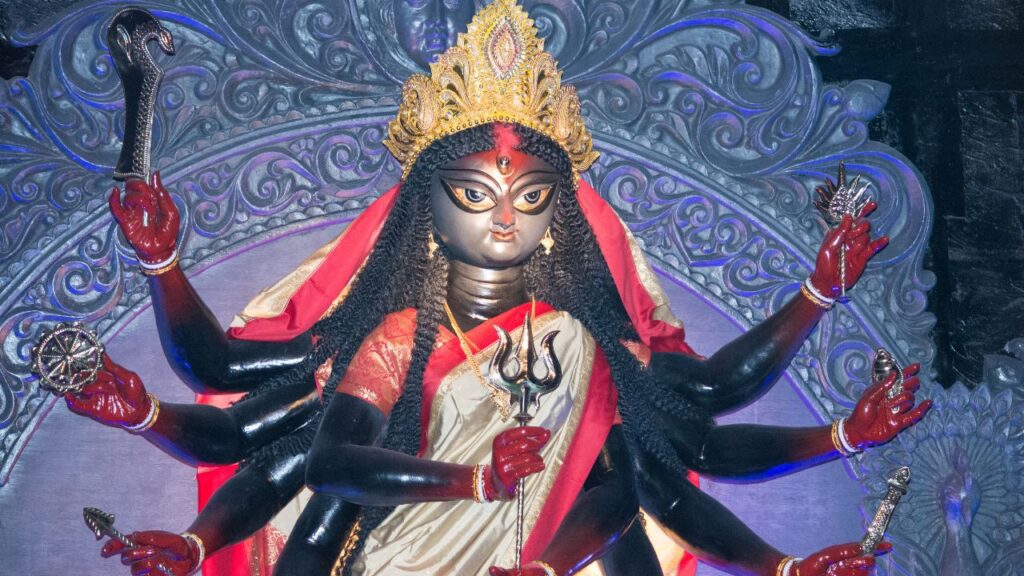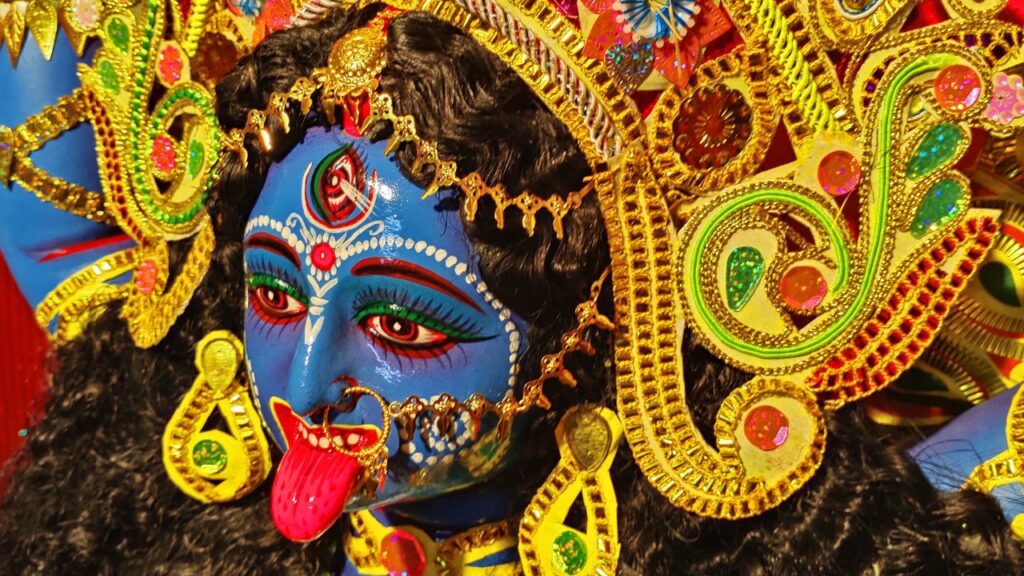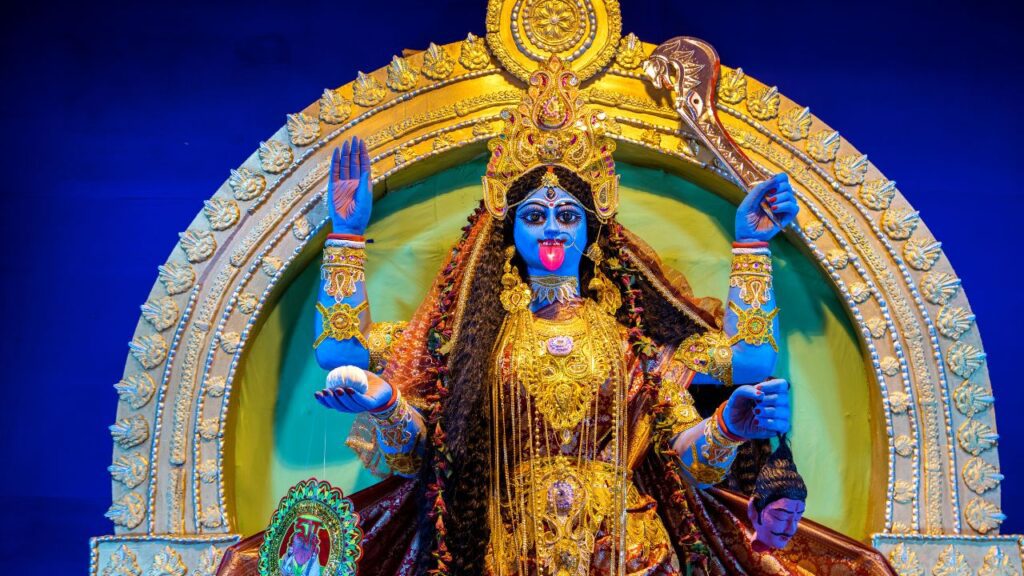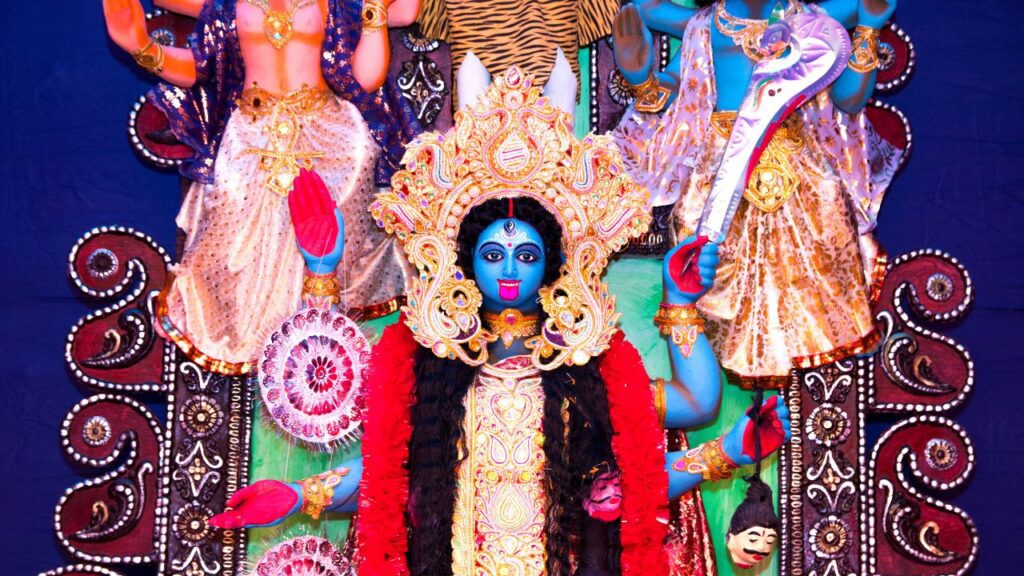Kaali Puja: Rituals and Traditions Explained
Introduction
On the Hindu calendar, the night of Diwali is one of great spiritual importance marked by respect of the strong Goddess Kaali. Celebrated as Kaali Puja, this lucky event honors the victory of good over evil—a timeless struggle that speaks to the hearts of followers most profoundly. Particularly in the cultural capital of Kolkata, the celebrations around Kaali Puja unfold throughout the busy streets of India with a mesmerizing mix of rites, customs, and community spirit.
Kaali Puja’s Mythological Starting Point
Kaali Puja originated in the complex fabric of Hindu mythology, where the ferocious and strong Goddess Kaali arises as the representation of divine devastation. Legend has Kaali as the ultimate vanquisher of evil; her very name denotes the annihilation of all that is dark and wicked. The festival’s beginnings are thought to result from the search for the goddess’s protection and blessings, therefore calling her powerful presence to guard followers from the hands of fate.
The Story of Kaali’s Success
One of great importance, the legendary story about Kaali Puja highlights the goddess’s relentless power and her position as the defender of morality. The traditions tell of Kaali’s merciless fight against the demonic spirits and her relentless will to destroy the representatives of evil. The fundamental core of the Kaali Puja celebrations revolves on this victory of good over evil, which motivates participants to face their own inner demons with unflinching confidence and conviction.
Kaali, the destroyer of darkness,
Kaali is a revered person in Hindu mythology because of her iconography, which features a dark, angry face and her capacity to fight the powers of darkness. Kaali Puja marks the celebration of the goddess’s power and might as followers seek her blessings to clear their path of difficulty. The symbolic meaning of Kaali’s function as the destroyer of evil permeates the festival’s customs and rites, therefore attesting to the ongoing conviction that the triumph of justice over the powers of darkness.
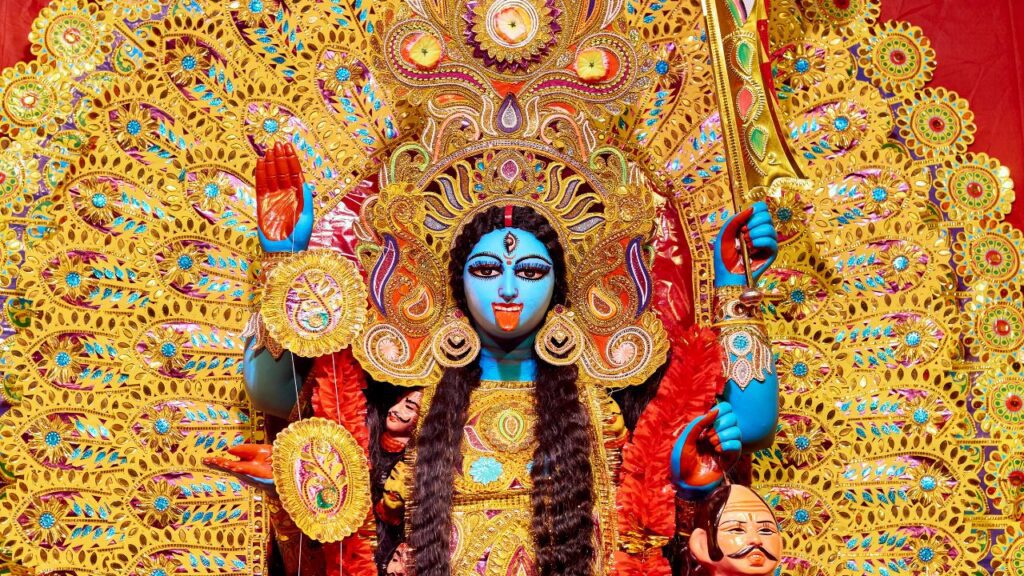
Preparations for Kaali Puja
Kaali Puja is a carefully scheduled event whereby people engage in complex preparations to guarantee a significant and lucky celebration. There are many steps in these preparations, all with great spiritual meaning.
Cleansing the Puja Space
The first and most important stage in Kaali Puja preparations is exhaustive cleaning and purifying of the chosen puja venue. Considered as “Shuddhi,” this custom is carried out with great care and attention since it prepares the ground for the holy devotion of the goddess. Often utilizing holy herbs and incense, devotees painstakingly clean the venue to provide a spotless and holy surroundings for the puja.
gathering of Puja Essentials
Apart from cleaning the surroundings, followers meticulously arrange the required puja tools and offerings. From flowers to incense to lamps to sweets to fruits, each of which has symbolic meaning in the view of the followers, this covers a wide range of objects. The great respect and dedication that followers of the goddess Kaali cherish evident in the meticulous crafting of these gifts.
Setting up the Puja Altar
The Kaali Puja festivities center the puja altar, sometimes known as “Puja Mandap.” Devotees painstakingly set the altar, embellishing it with vibrant decorations, delicate designs, and the well chosen puja objects. The altar is the focal point of the ceremonies; the worshippers point their prayers and offerings to the beloved goddess.
Getting ready the Feast
Making a special feast, or “Bhog,” to present to the goddess is a fundamental component of the Kaali Puja preparations. Often following age-old traditions handed down over the years, devotees spend time and effort in creating traditional delights. Considered a holy gift, the Bhog reflects the love and respect of the followers toward the divine.
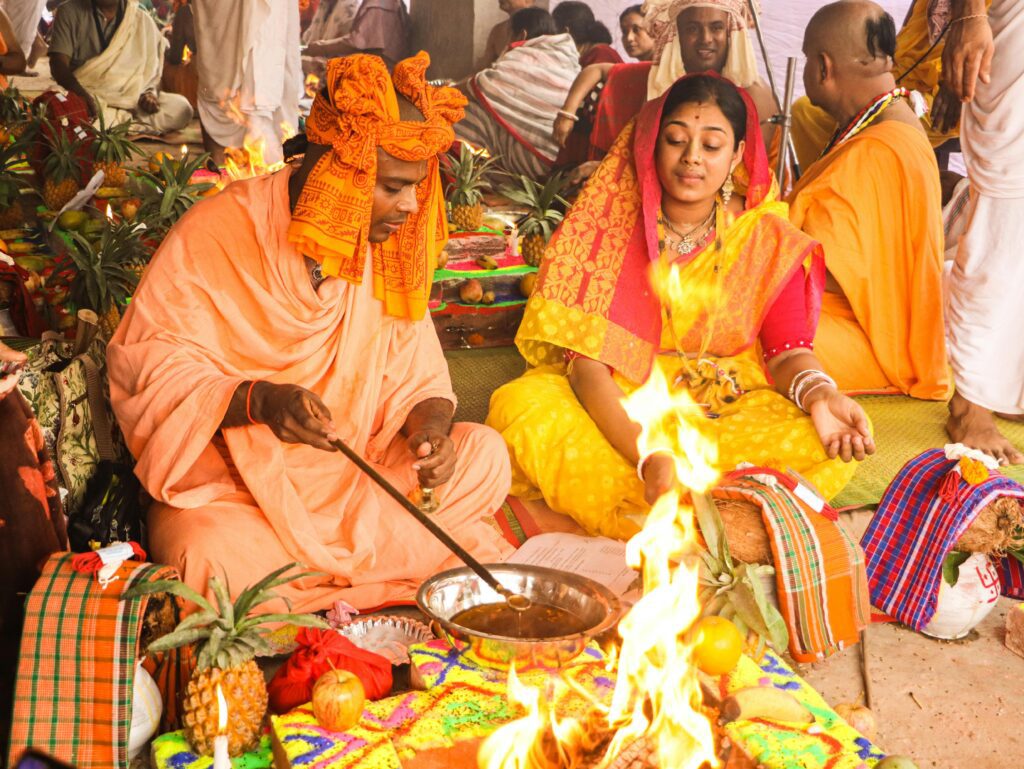
The Rituals of Kaali Puja
The Kaali Puja rites are a deep and complex event distinguished by the chanting of holy mantras, the presenting of devotional objects, and the execution of fortunate ceremonies. Deeply ingrained in the rich tapestry of Hindu spiritual traditions, these rites each have deeper symbolic value.
Invoking and Mantra Chanting
The Kaali Puja starts with the goddess’ invocation as followers adore her by chanting hymns and holy mantras. The chanting of these strong songs is thought to call for Kaali’s divine presence, therefore creating a close link between the followers and the goddess.
Providing Incense and Flowers
The presenting of flowers and incense to the goddess is one of Kaali Puja’s main rites. Presenting fragrant blossoms and scented incense as a mark of their respect and dedication, devotees choose them carefully. These presents are supposed to satisfy the goddess and foster a spiritual and hygienic environment.
Diyas Lighting:
A classic component of the Kaali Puja festivities is the lighting of traditional oil lamps, sometimes referred to as “Diyas.” Considered as a mirror of the goddess’s position as the vanquisher of evil, the flickering flames of the Diyas reflect the triumph of light over darkness.
The Aarti Ceremony
Within the Kaali Puja celebrations, the Aarti ceremony is a very valued custom. Devotees waving a lit lamp, or “Aarti,” before the deity during this rite shout prayers and songs in the goddess’s honor. The Aarti is thought to bestow upon the followers the divine benefits of Kaali, therefore cleaning them of any negativity or pollutants.
Getting the Prasad
Distribution of the “Prasad,” the holy presents sanctified by the goddess, marks the end of the puja. Often including sweets, fruits, and other treats, the Prasad is eagerly received by devotees as a sign of Kaali’s heavenly grace and blessings.
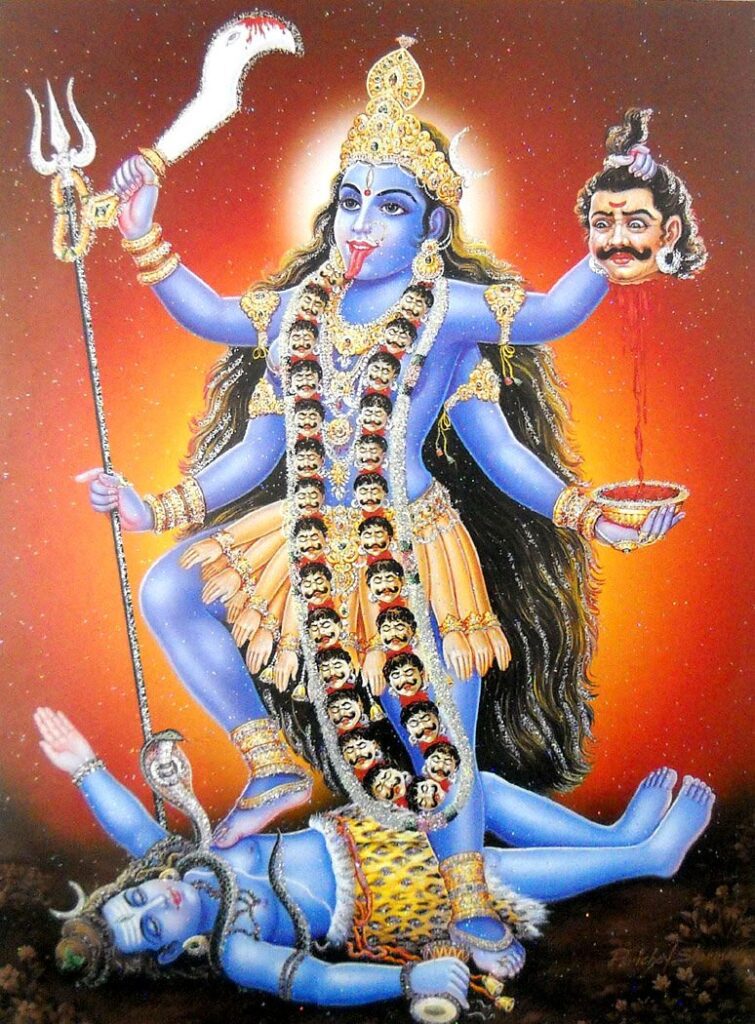
The Grandeur of Kaali Puja Celebrations
Both followers and guests of Kolkata are enthralled with the Kaali Puja celebrations for their unmatched grandeur and cultural vitality.
Beautiful Pandals and Idols
Built in honor of Goddess Kaali, the great pandals—or temporary shrines—bring the streets of Kolkata alive. These carefully crafted pandals highlight the extraordinary artistic skills and workmanship of the nearby craftspeople. Comprising complex intricacies and vivid hues, the towering goddess idols provide witness to the respect of the followers and the rich cultural legacy of the city.
Enchanting Lighting and Decoration Styles
The Kaali Puja celebrations are distinguished by a brilliant exhibition of decorations and illuminations altering the cityscape. Vibrant rangoli designs, bright flower arrangements, and mesmerizing light shows produce an enchanted environment that symbolizes the triumph of light over darkness and the happy attitude of the celebrations.
Local Events and Cultural Performances
Kaali Puja is an occasion for the community to join together in a celebration of unity rather than only a religious one. Devotees swarm in great numbers, taking part in “Bhandara,” or community feasts, and savoring cultural events highlighting the rich creative legacy of the city. Theatrical events, traditional dances, and musical interpretations add to the celebratory atmosphere, so harmonizing spirituality with cultural expression.
The Bright Aarti Ceremony
The amazing Aarti ceremony held at midnight during the Kaali Puja celebrations marks the climax event. The chanting of mantras and the flickering of innumerable Diyas as the followers assemble around the pandals fills the air with a hypnotic and profoundly spiritual environment. The Aarti ritual is evidence of the faithful faith of the followers and their respect of the goddess Kaali.
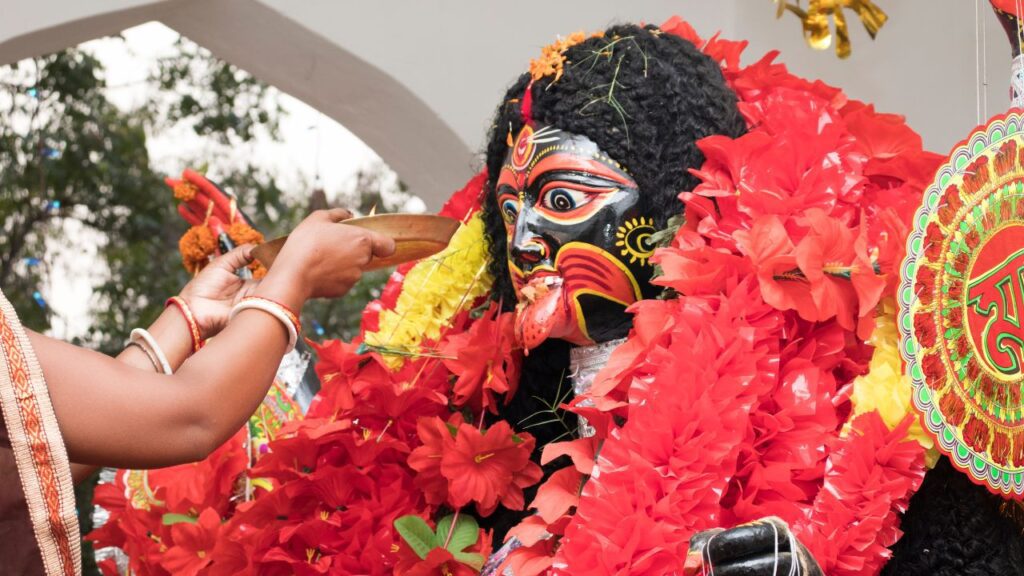
The Kaali Puja’s symbolic meaning
Beyond simple religious observance and into the deeper philosophical and spiritual spheres of Hindu thinking, the Kaali Puja rituals have great symbolic relevance.
Kaali as the Evil destroyer
Kaali Puja is really about the respect of the goddess as the last conqueror of evil. Kaali’s strong and aggressive imagery symbolizes the unrelenting fight against the powers of darkness, both personally and globally. The celebration reminds attendees to battle their own inner demons and to welcome the ability of righteousness against hardship.
Good Over Evil: The Triumph
Kaali Puja’s fundamental theme—the triumph of good over evil—resonates globally across many religions and belief systems. The goddess’s triumph over the demonic forces marks the ceaseless and relentless triumph of light, knowledge, and compassion over the forces of ignorance, wealth, and evil. Devotees will find great inspiration in this message of hope and transformation to help them develop spiritual enlightenment, bravery, and tenacity.
Searching for Blessings and Protection
Celebrating Goddess Kaali during the Puja helps followers seek her heavenly protection and blessings. They think they may overcome both physical and psychological difficulties in their life by calling upon the goddess’s strength. The Kaali Puja ceremonies and offerings help followers to establish a close relationship with the divine, therefore enabling them to face their anxieties and welcome a life of fulfillment and spiritual development.
The Enlightenment’s Pursuit of Liberation
Fundamentally, the Kaali Puja rituals are evidence of the aspiration for emancipation and enlightenment among the followers. The goddess’s capacity to vanquish the powers of evil is interpreted as a parable for the personal path towards self-realization and the reaching of spiritual freedom. Through Kaali devotion, followers hope to free themselves from the bonds of ignorance and straighten themselves with the timeless ideas of truth, justice, and divine wisdom.
Conclusion: embracing Kaali Puja’s Spirit
The Kaali Puja celebrations in Kolkata are a mesmerizing manifestation of Hindu spirituality in which the secular and the holy mix in a vivid tapestry of customs, ceremonies, and rites. The flickering fires of the Diyas and the brilliant pandals brighten the city, and the followers are gathered in their respect of the strong Goddess Kaali, the personification of the victory of good over evil.
The Kaali Puja rituals provide as a strong reminder of the continuing relevance of Hindu spiritual ideas in the contemporary society. They inspire followers to face their inner demons, develop their bravery and will, and welcome the timeless values of morality and heavenly knowledge. Participating in these celebrations helps people from all areas of life to relate to the ageless wisdom of the Hindu faith and get ideas to guide their life toward fulfillment, spiritual development, and purpose.
Kolkata is evidence of the continuing strength of faith, community, and cultural legacy as the Kaali Puja celebrations enthrall the hearts and brains of their participants. Globally, the festival’s message of optimism, transformation, and the triumph of light over evil invites all those who see it to embrace the Kaali Puja ethos and start their own path of self-discovery and spiritual enlightenment.

Frequently Asked Questions
Why is Kaali Puja held on Diwali significant?
Celebrated on the night of Diwali, Kaali Puja is rather important in Hindu tradition. With the fiery and strong Goddess Kaali destroying bad energies, it honors the victory of good over evil. Devotees of the festival seek the goddess’s protection and graces, therefore calling her heavenly presence to help them to overcome obstacles and reach spiritual enlightenment.
Which main ceremonies and customs surround Kaali Puja?
The Kaali Puja celebrations comprise a sequence of complex ceremonies and customs including the purification of the puja venue, the offering of flowers, incense, and sweets, the lighting of Diyas, and the performing of the magnificent Aarti ceremony. Deeply ingrained in Hindu spiritual teachings, these ceremonies are supposed to create a close relationship between the followers and the goddess Kaali.
What makes Kolkata’s Kaali Puja celebrations unique?
The grandeur and cultural vitality of the Kaali Puja celebrations in Kolkata are well-known The city is ornamented with great pandals and tall goddess idols that highlight the extraordinary artistic ability and workmanship of the nearby artists. Enchanting décor, fascinating light displays, and energetic community events combining spirituality with cultural expressions define the festivities, therefore producing a very immersive and unforgettable experience.
Kaali is the destroyer of evil, hence what symbolic meaning does she possess?
Kaali’s strong and forceful images convey her position as the final vanquish of evil powers. With the goddess as the emblem of the triumph of righteousness over darkness, the Kaali Puja rituals reflect the continuous struggle between good and evil. Devotees of Kaali try to face their own inner demons and develop the qualities of bravery, will, and spiritual enlightenment by means of Kaali.
What ways may the Kaali Puja celebrations help to preserve Hindu cultural legacy?
Kolkata’s rich cultural legacy and the ongoing importance of Hindu spiritual teachings are shown by the Kaali Puja festivities there. The complex ceremonies, colorful decorations, and neighborhood meetings all help to maintain and pass on historical customs to next generations. Through taking part in these celebrations, people from all walks of life can relate to the ageless knowledge of the Hindu faith and get motivation to preserve the principles of loyalty, spirituality, and cultural unity.
#kali #kalipuja #kalimaapuja #kali #puja
